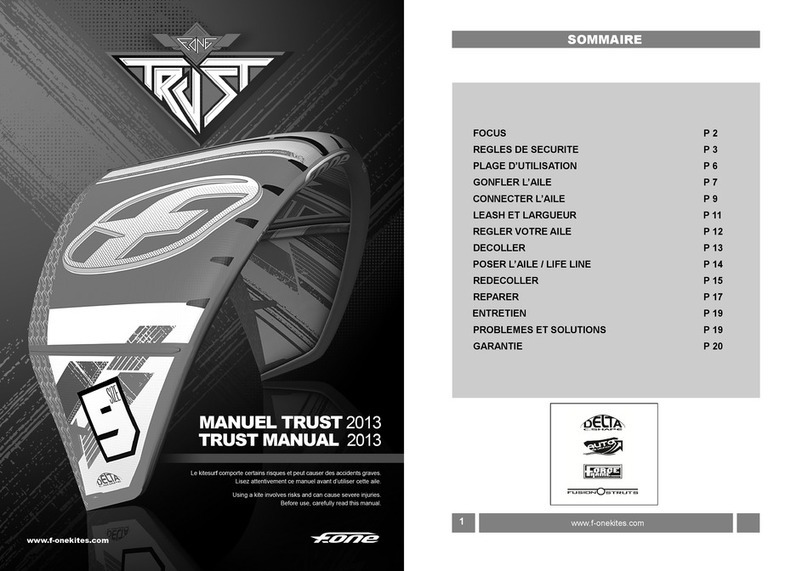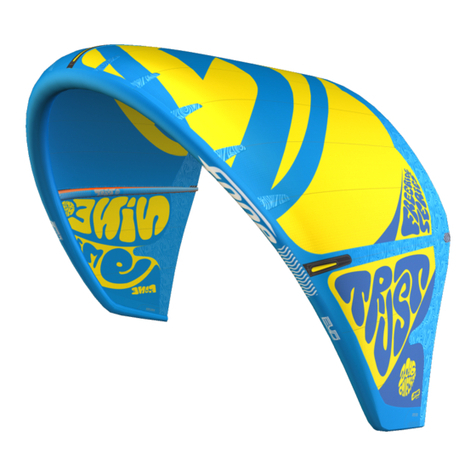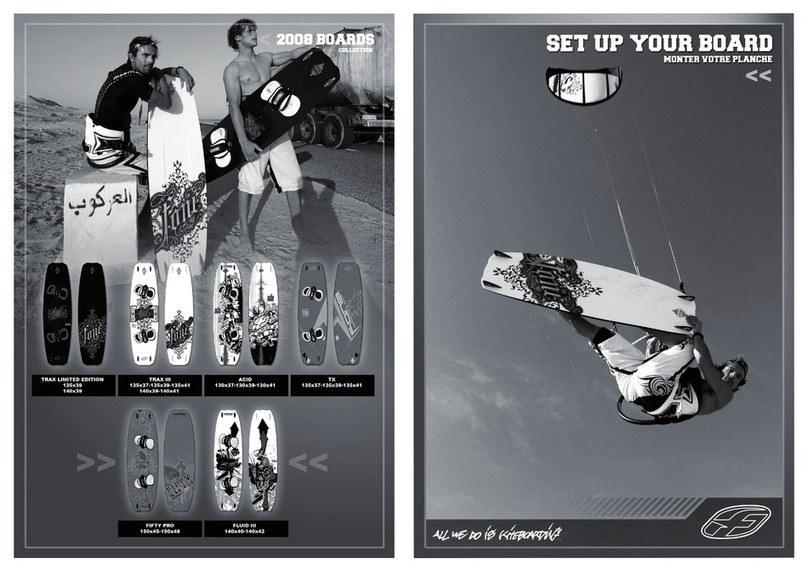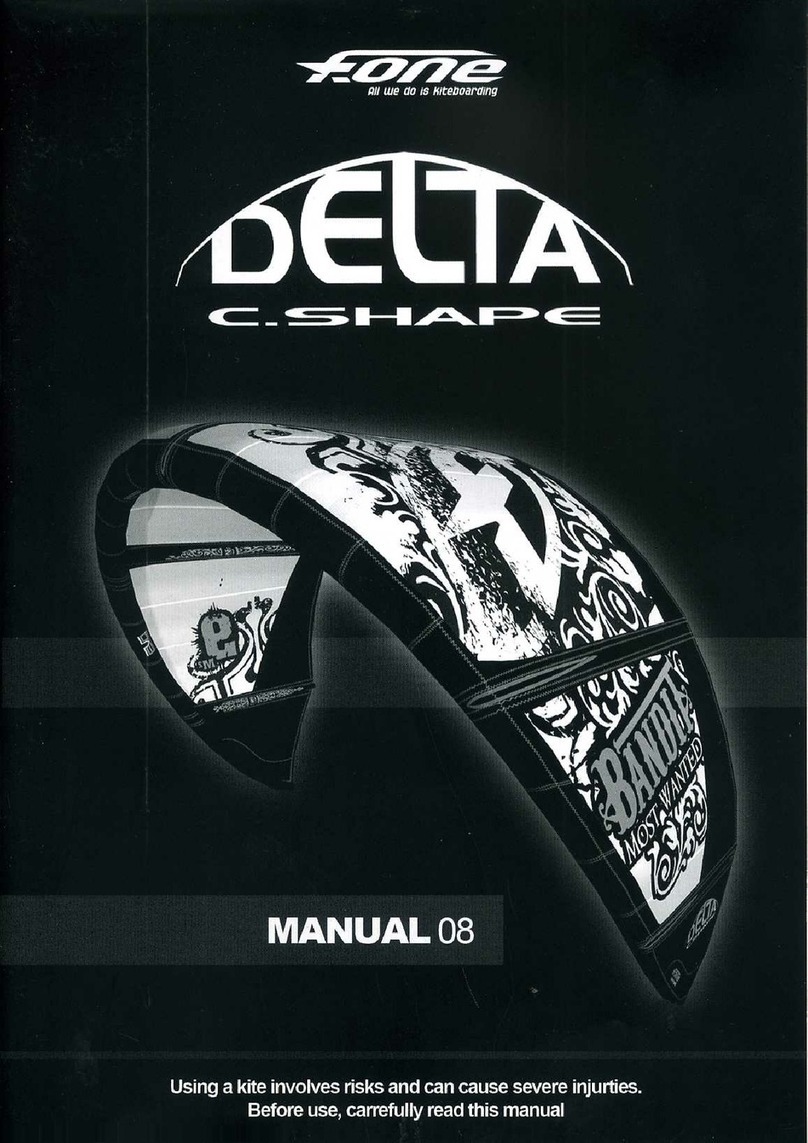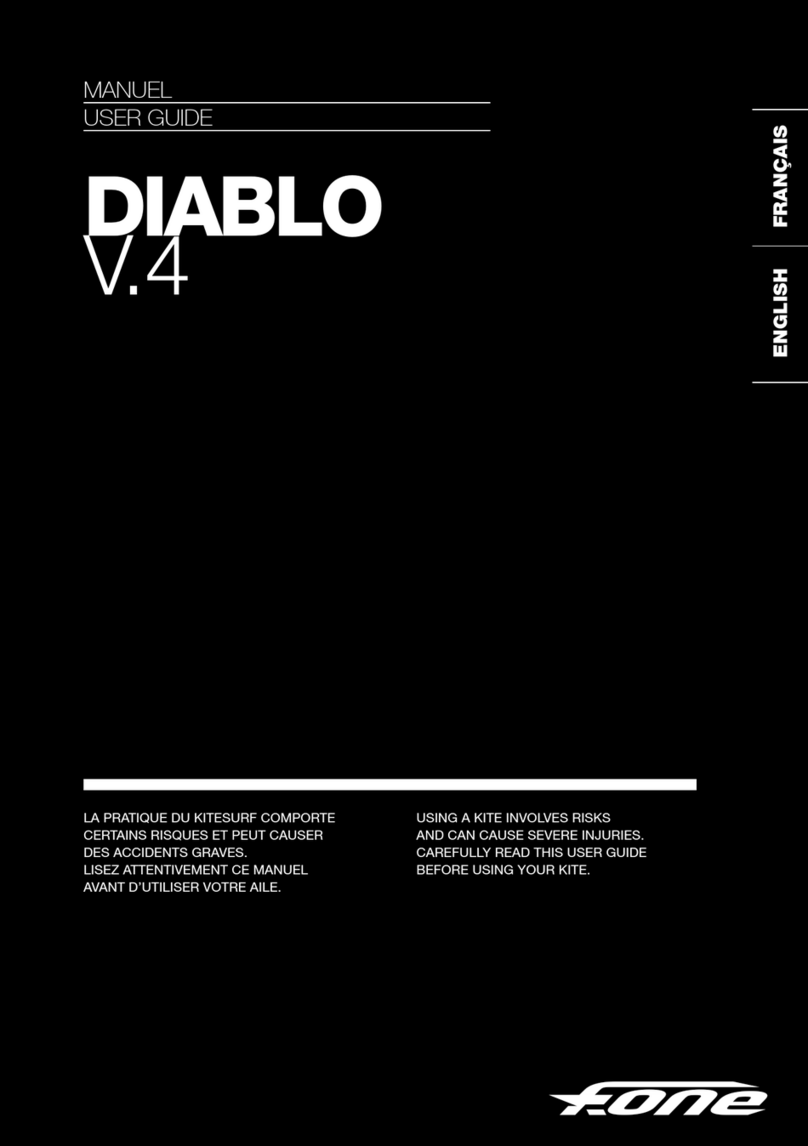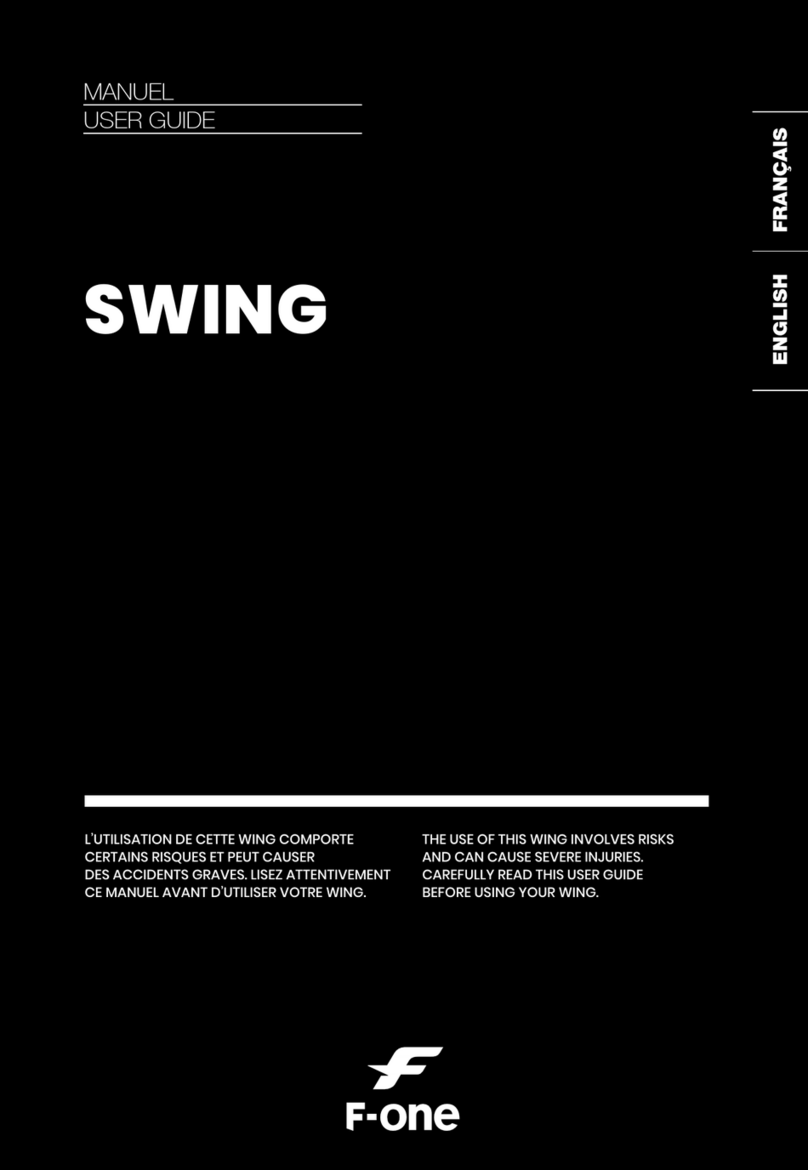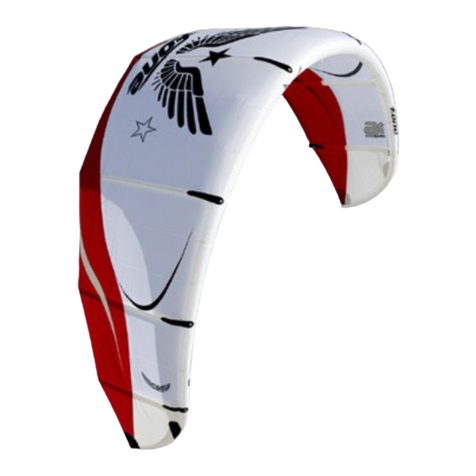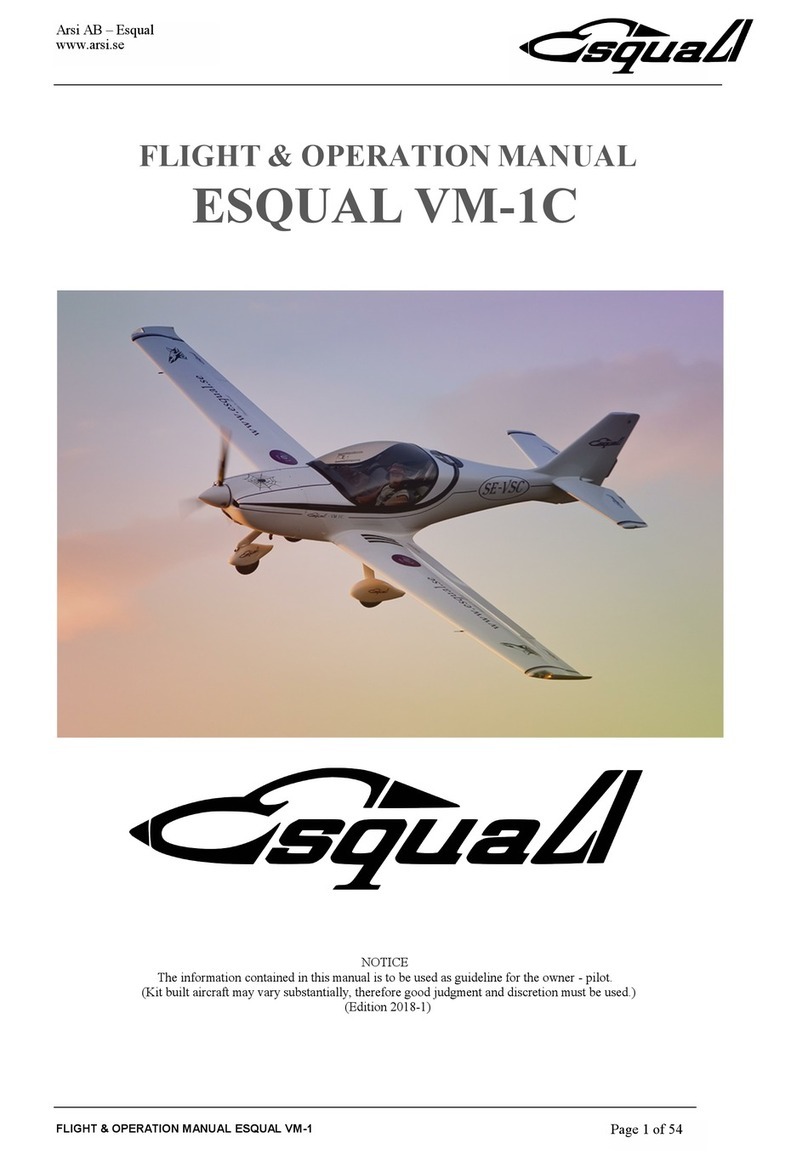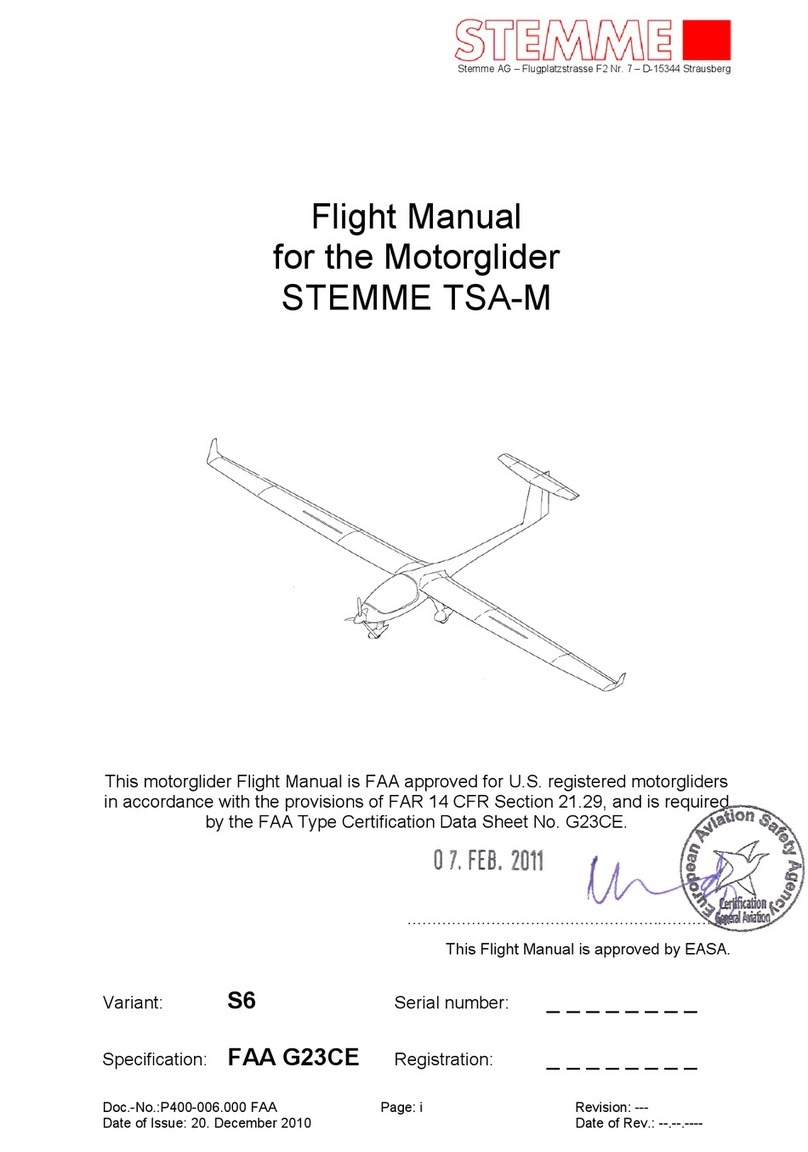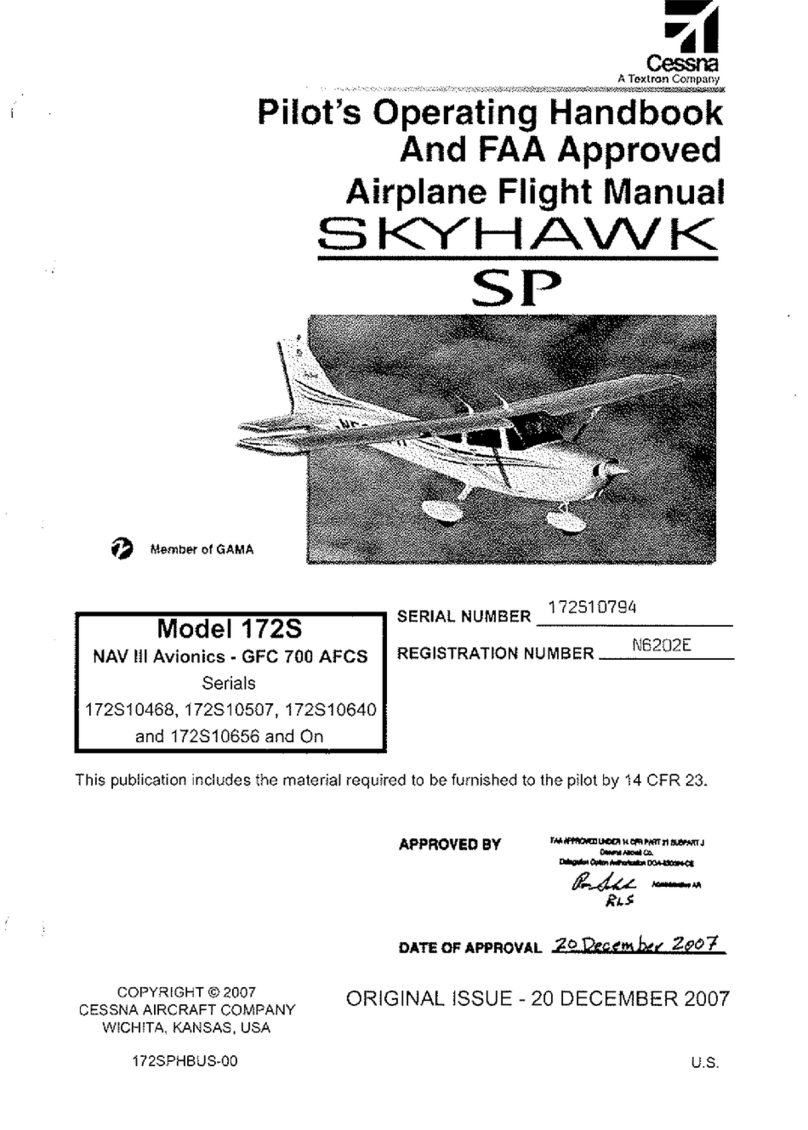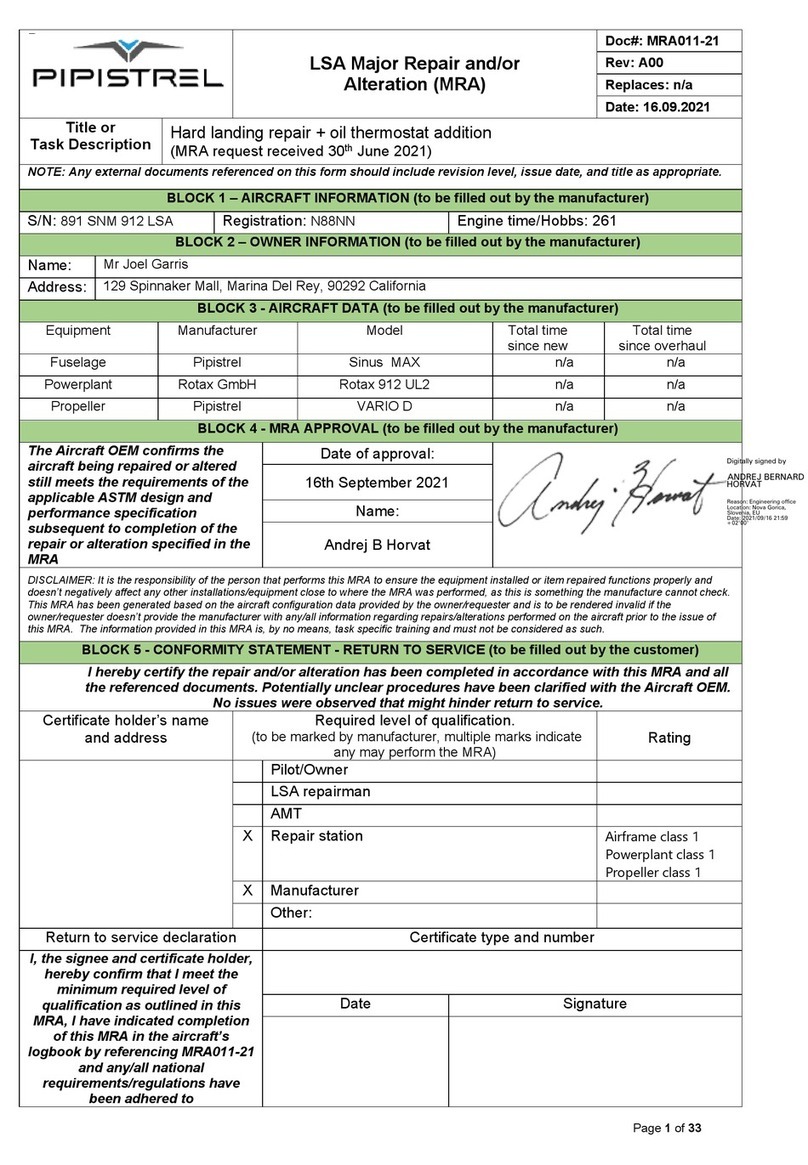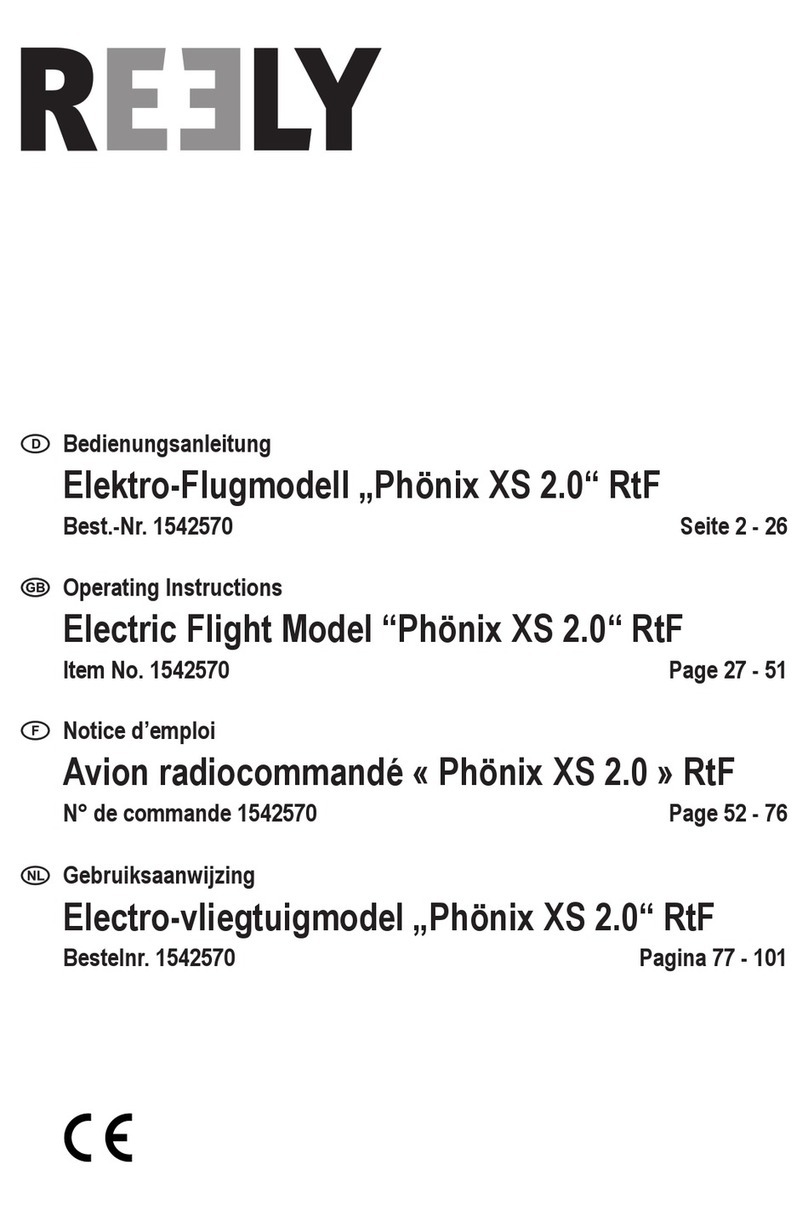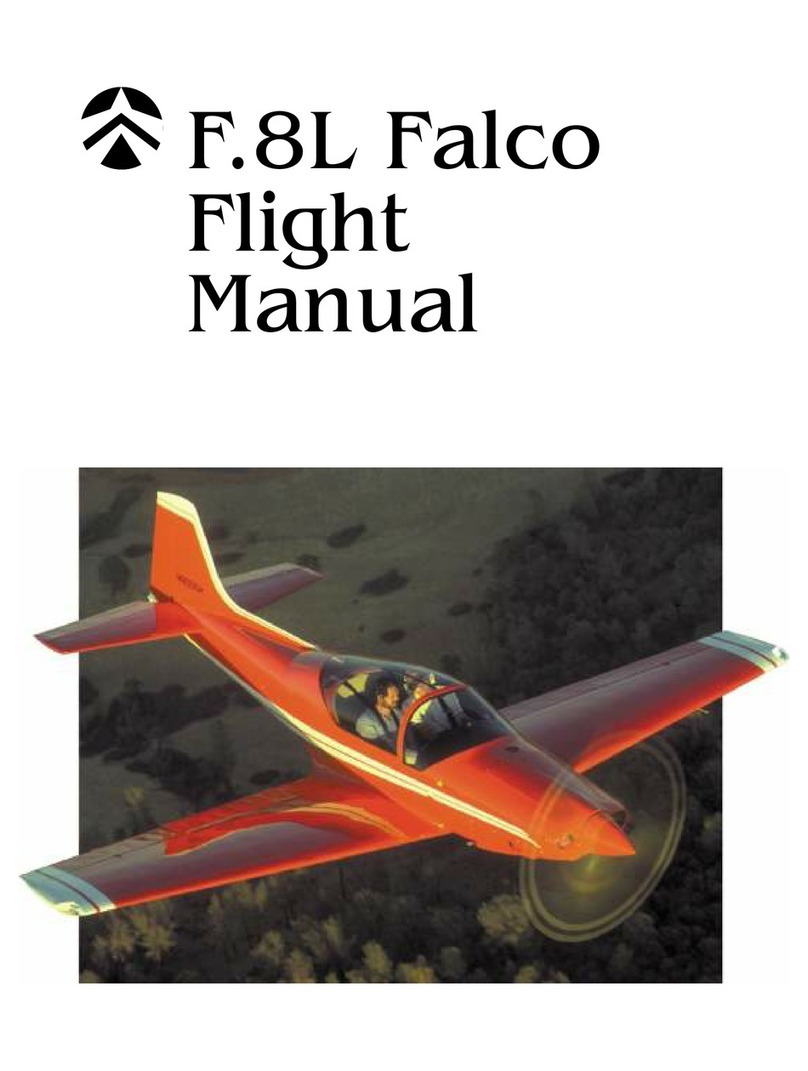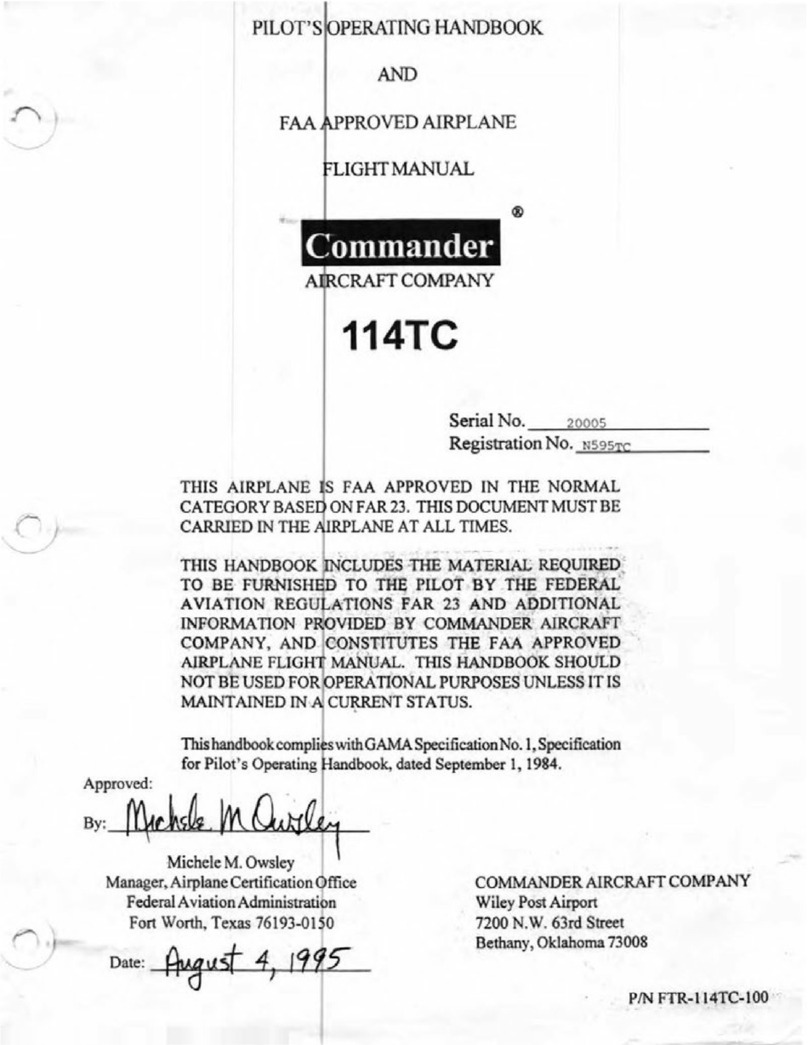Fone Bandit Dos User manual


www.f-onekites.com
FOCUS P2
SAFETY P3
WINDRANGE P6
SETTING UP YOUR KITE P 7
SETTINGUPYOURBAR P11
TUNING UP YOUR KITE P 12
LAUNCHING P13
LANDING/ LIFE LINE P 14
RELAUNCHING P 15
REPAIRING P16
KITECARE P17
PROBLEMS and SOLUTIONS P 17
WARRANTY P18
CONTENTS
1

www.f-onekites.com
FOCUS
2
6
2
3
4
1 2
5
3
Here is a glossary of your equipment for you to get acquainted with most
technical terms used in this manual.
1
5
6
4
7
Your kite
1. Leading edge
2. Struts
3. Wingtips
4. Trailing edge
5. Front lines
6. Back lines
7. The bridle
Your bar
We spend a lot of time making sure the entire set
up could be personalized: the chicken loop release is
mounted on the UPS and can be place on either the left
or the right side.
1. Releasable chicken loop
2. Back leader lines
3. Back adjustment strap
4. Power adjustment strap
5. Life line
6. Kite leash
Accessories
1 Extensible kite bag
1 Patch repair kit for bladders

www.f-onekites.com
Before use, carefully read this manual
Assumption of risk:
Using a kite involves certain inherent risks and hazards, and can cause severe injuries,
damage or death to the user and or third parties. The user of any F.one product assumes
and accepts any and all risks related to Kiteboarding. If you are Kiteboarding you freely
agree to take full responsibility for the safety of yourself and others, including informing
subsequent users and owners of the assumption of risk. Risks inherent to Kiteboarding can
be greatly reduced by practicing common sense and it is strongly advised first time
kiteboarders acquire training at an accredited Kiteboarding school. To locate the school
nearest you please log on to www.f-onekites.com in the school / dealers area of the site.
Here are some safety tips to know and to follow:
Safety equipment, (helmet, life vest, etc«) contributes to your safety, yet caution remains
the best safety device of them all. Keep in mind that no one controls the wind, so always be
aware of the weather.
Rule n°1: Your safety
Do not ever tie yourself to the kite in a permanent manner, or any heavy or fixed object. You
should always be in a position to let go of the kite rapidly in a case of an emergency
(tangled lines, wind to strong, injury«). To achieve that, regularly check all components,
ensure the quick release is not worn out, regularly rinse your material. But keep in mind that
every quick release safety system should work in combination with a leash, which allows
you to keep your kite attached to you. This leash should also be releasable in case of an
emergency. Every F.one bar is equipped with the Life Line security system which allows
you to cancel the power of your kite quickly with minimal effort.
Do not try to grab a kite by its lines. Under tension they can be as lethal as a razor blade.
This kite is not a flying device (paraglide) or floatation devise and should not be used as
such.
Never go riding alone: It is strongly suggested to ride with someone who could eventually
call for assistance in case of an emergency.
Rule n°2: Get set up
The helmet
It is strongly recommended to protect you against your board in case of a fall, and in other
unexpected conditions such as hard landing and bad take off.
The wetsuit
Choose a full-length wetsuit or a shorty according to the water temperature. Please note
that if you are cold, you’ll use more of your energy.
The life vest
The life vest can help you during your waterstarts and while re-launching the kite. You will
be glad to wear it during your first jumps to cushion some hard landings. It also will be a
good companion if you get stranded and have to swim back to shore.
The harness
The harness should be comfortable and of strong manufacture. It is the link between you
and your kite. Seat harness or waist harness, can both be used. Seat harnesses are more
appropriate for beginners. Beginners tend to spend more time with the kite at the zenith
(directly above the head) and in that position the seat harness does not move upward as
much as the waist harness. Some accessories to accompany your harness: a back handle
to help others hold you down in case of gusty winds, a line cutter, a double loop to tie down
your leash, kite or board.
SAFETY
3

www.f-onekites.com
4
Rule n° 3: Choose your practice spot
Observe local laws and regulations regarding kitesurf and the usage area.
Choose your spot according to your level:
The choice of a good spot is a prerogative for a safe learning. The best spot is not
necessary the spot where you find the most kites. If you just started or if you do not control
your kite properly, the best spot is the least crowded one. The water and wind conditions
also vary, advance kitesurfers often look for strong wind and good waves where beginners
should be looking for calm waters and softer winds. When first starting out it is
recommended to look for a place with fairly shallow waters.
Choose an obstacle free area:
Check that the space on your sides and under your wind is free of obstacle: no houses, no
trees, no cars or jetties. Under no circumstances should you be riding near electrical posts
and wires, or near an airfield or even near a harbor.
Wind direction:
Never ride in strong offshore wind. The wind can die at any moment or a line can break. In
offshore wind it is harder to swim back to shore, the wind and the current pushing away
from the beach.
It is not recommended to ride when the wind is on-shore especially for beginners as the
wind pushes directly onto the beach. This will make your learning harder: you will not be
able to do good runs and go up wind, and you will end up on the sand very quickly. This will
also be more risky the slightest gust could send you onto the sand and your kite may fall
violently onto the sand.
Therefore always ride while the wind is side or side-on, you in terms will be able to go
downwind while keeping a safe position in case of an emergency.
The area down the wind:
Be cautious and check that there are no obstacles going down wind. You should always
consider room for error. Keep in mind that the risk is to go down wind, beginner or not. You
are not free from breaking a line, losing your board, or breaking your harness«therefore
the beach down the wind should always be accessible. Think that you may have to walk
back alongside the beach (check that there are no rocks, cliffs, fences, or jetties blocking
your way).
If you are just starting out or if you cannot entirely control your kite, be careful as to where
you stand on the spot: if the spot is big enough, it is better to stand upwind from other kites
to avoid crossing your lines with theirs. It is less tricky for you and them, this will allow you
to concentrate on your flying and less on others.
Rule n°4: Check the weather conditions
Check with the local weather forecast, (radio, web, harbor crew).
How strong are the winds and from which direction? You must know how the speed of the
wind and the direction are going to evolve during the day.
You should not ride during stormy weather, the kite may attract lightning!
Also check on the tides schedules and the areas for rip currents.
SAFETY

www.f-onekites.com
SAFETY
5
Rule n°5: Respect and help out others
Put away your material
Be careful not to unwind your lines on top of others’. The same applies when you put down
your kite, be careful not to do it on top of someone’s line. This can become hazardous if he
or she re-launches his or her kite without noticing your lines. If you leave your kite on the
beach, to get some rest or just waiting for better conditions, think of rolling up your lines on
your bar to clear up the spot.. Disconnect the lines from the kite if you are going to live the
kite on the beach unattended.
Avoid the kite at the zenith
Avoid if possible staying with the kite at the zenith while you are still on the ground, better to
take it down in order to get some rest. This could be hazardous for you and the others: you
are not safe from a sudden lack of wind or a strong gust that could take you down. On the
ground or the beach, falls are harder and they hurt.
Your kite at the zenith can also disturb the others from landing and launching their kites.
Help out others
Always keep an eye on your surroundings, and pay attention to others. Do not hesitate to
help out others launching and landing their kites, or going after a struggling kitesurfer.
Respect the priority on the water
When two kitesurfers are passing each other, the one closer to the wind origin should raise
his kite and the kite surfer under the wind should lower his kite to avoid a tangling of the
lines.
When two kitesurfers are facing each other, the kite surfer riding with the wind coming from
starboard (right hand forward) according to the path followed has the priority over the kite
surfer who’s wind comes from port side (left hand forward). The kitesurfer riding starboard
should maintain his or her trajectory and the one riding port side should move further
down the wind in order not to cross their paths.
Before any jumps or direction changes, make sure there is enough room and that you are
not going to cross anyone’s path.
Respect bystanders.
Inform the spectators of the power of the kite and of the potential risk by staying downwind
from a kite surfer.
Do not lend your equipment to a none kite surfer.
Rule n°6: Learn to use your safety systems
Do not fly your kite without a proper safety system allowing you to instantly kill the power of
the kite and without a safety leash connecting you to the kite once you have killed the
power, this leash should also be releasable in case of an emergency. Frequently check the
wear and tear of your safety systems.
Do not wait for trouble to learn how to operate your safety systems. Chose a wide open
area to practice your release of the kite.

www.f-onekites.com
WIND RANGE
6
The wind ranges are expressed in knots and the sizes in actual square meters.
This wind range is given to you as an indication for a rider weighting 75 kilos. Wind range varies
according to each rider. It depends on:
The rider’s level: the more you progress the more you will be able to use the kite in the upper
wind range.
The rider’s weight: the bigger you are the more you will be able to use the kite in the upper
wind range.
The board’s volume: the more volume your board has the more you will be able to use the
kite in the lower wind range.
You also must choose your kite according to: the aerological situation (the airflow quality), the
weather conditions (wind direction, speed, forecast), and the overall quality of the spot and the level
of safety it offers.
When you get to the spot, measure up the wind speed. Take your time to figure out the conditions,
don’t make any mistake, one minute is not enough, you need to control that the wind is steady free
of gusts. Check out the other kites, their sizes, that will give you some indications on the conditions.
If you hesitate between two kite sizes always take the smaller one, you will have more fun riding
underpowered rather than overpowered.
If you cannot walk backward alone with the kite in the air, that means that you are
overpowered. Land your kite.
Bft Km/h Knots Description
0 <1 <1 Calm, smoke raises vertically.
1 1-5 1-3 Light air.
2 6-11 4-6 Gentle breeze.
3 12-19 7-10 Flags extended,
good wind for beginners.
4 20-28 11-16 First white caps appear;
make your first runs.
5 29-38 17-21 Trees begin to sway,
attempt your first jumps.
6 39-49 22-27 Sand blows on the beach,
7 50-61 28-33 The white caps are all over,
reserved to advanced riders.
8 62-74 34-40 Resistance felt in walking against wind.
9 75-88 41-47 Watch the power of nature.
10+ >89 >48 Stay home!
This table is only to
b e u s e d f o r
guidance. You
should also take
into account the
wind density. Watch
o u t a l s o f o r
unstable wind.
Sizes in
m
2
4.5 8 9 14 16
Wind range in
knots
30 + 18>40 14>34 9>22 8>20
10
12>30
12
11>26
5.5
25 +
7
22 +

www.f-onekites.com
1 - Determine the wind direction.
2 - Unroll your kite and position it so that one of its wing tips is located upwind
from the other. Place some sand on the upwind wing tip of the kite.
3 - Before using the pump, operate it a few times to eject any sand left in the tube.
This will prevent any sand from entering the kite’s bladders.
The first few times you inflate your kite, pump the air into each bladder until it
is halfway full and « massage » it in order to correctly position the bladder inside the
strut. Finish the inflation until the bladder is firm and full. Struts are equipped with
ball stoppers thus no need to pinch the valves. Careful, do not try to push the valve
inside as you would do with an inflatable toy.
Inflate the struts to 12 PSI.
4 - Inflate the leading edge bladder last. Remove the sand from the kite and stand
with your back facing the wind, attach your pump to your kite with a larks head knot
using the connector next to the leading edge valve.
5 - Pump until it’s firm and wrinkle-free. Make sure the defaltion valve is properly
closed and sealed off with the Velcro cover.
Inflate the leading edge to 10 PSI.
6 - Place your kite on its leading edge with the struts pointing downwind and se-
cure it putting sand on it.
SETTING UP YOUR KITE
7

www.f-onekites.com
8
SETTING UP YOUR KITE
WIND
1
2
3
4
5
6

www.f-onekites.com
SETTING UP YOUR KITE
9
1 - Unroll your line facing the wind and lay your bar down with the F-one logo facing
up (red end left, green end right).
2 - Untangle the line by walking towards the kite. Spread your lines with the grey
front lines in the center, the red back line on the left and the green back line on the
right.
3 - Check the bridle is free of knots
4 - 5 Connect the front lines to the gray front connectors of the kite. You need to do
a lark heads knot with the connectors on the kite.
6 - Connect your back lines the same way, green on green and red on red. Be care-
ful, the front and back lines should not cross each other’s.
LARK HEAD
REDBACKLINE
GREENBACKLINE
FRONTLINE
FRONTLINE
WIND

www.f-onekites.com
SETTING UP YOUR KITE
10
1
2
3
4
5
6
WIND

www.f-onekites.com
SETTING UP YOUR BAR
ET LA BARRE
11
3 - Kite unhooked
You can unscrew the finger to hook and unhook easier. If you let go of your bar
during an unhooked trick, it will run along the Life Line and your kite will land
safely on its back with no power. Pull on the Life Line to retrieve your bar.
Warning, do not add a finger to your harness buckle when using the big loop. If
you active the quick release, the red handle might get stuck in the harness buc-
kle because of it.
1 -
Kite leash
Never launch your kite without being connected to the Life line by the
leash.
You need to connect your kite leash to the loop under the red ball. Connect the
other end of the leash to your harness, at the provided area, usually using a built
in ring located either on the right or the left.
Your leash has a quick release activated by the pulling on the red handle
allowing you to completely get disconnected from the kite in case of extreme
danger. Warning, doing so the kite, the bar and lines could hurt some one
located under your wind.
2 - Chicken loop
Place the finger in the harness buckle while you are riding to prevent from
being unhooked.
Warning: if you use a Wichard® release, the F.one release system will not
work. The chicken loop will not go through the Wichard®.
1
2

www.f-onekites.com
12
TUNNING UP YOUR KITE
Power management principles:
You should never sail with your arms fully extended, as you would have no further depowe-
ring ability in a gust. In this scenario you should shortening your front lines reduces the po-
wer generated by your kite. You can:
Pull down on the red strap of the power adjuster for ideal setting and reengage the
line in the cleat.
On land, select a knot on the front leader line closer to your bar, (knot 2 or 3).
To increase the power generated by your kite you should shortening the back lines.You
can:
Release (with the power adjuster) some line for ideal setting and reengage the line in
the cleat.
On land, select a knot on the front leader line further from your bar, (knot1).
Caution: these tuning techniques have limits – excessively shortening your centre lines will
render your kite hard to steer, and over-shortening your outer lines will overpower your kite
and ultimately make it fly backwards.
Knot 1
Knot 2
Knot 3
+ power
- power
Release =
+ power
Pull =
- power

www.f-onekites.com
13
LAUNCHING
WIND
direction
Before launching
Make sure you don’t have any lines on top of yours.
Make sure your lines are free of knots, watch out because strong winds can tangle them up in a few
second.
Make sure your connectors are in good shape, on your kite and on your bar.
Check your safety systems.
Make sure your launching area is free of obstacles.
Make sure your lines are free of any twist, front and Life lines.
Make sure you are connected to the kite by the leash.
If you are concerned of being overpowered ask someone to hold you down using the handle on your
harness.
Launching
Launch your kite preferably with someone assisting you. You need to launch your kite in the edge of
the wind window, meaning that the wind needs to be coming from one side, move in a way that you
feel the power of your kite. Your lines need to be perpendicular to the direction of the wind.
Advise your assistant to let go of the kite only when instructed by you (for instance raise your hand).
Your assistant should hold the kite by the middle of the leading edge (near the valves). Under no
circumstance should your assistant try to throw the kite (as if to gain speed) but just let go of the kite.
For your safety and the one of others choose someone competent enough to help you out in this
maneuver.
Always make sure that the lines do not cross each other or that they are misplaced. For that pull your
center leader line to one side to clearly disengage your front from your back lines. Even if you are
sure of your set up this last check up is necessary! Once the kite is air born it is too late and the kite
goes out of control perfect recipe for disaster.
The launching phase should happen in slow motion, bring your kite to the zenith slowly to avoid
being carried out.
We do not recommended to launch without assistance. It is risky. The kite could take off on its own
while you walk back to the bar. You will not be able to check if your lines are untangled. That is why
we do not go over this maneuver in this manual.

www.f-onekites.com
14
Landing your kite with assistance
When you come back to shore, choose a clean area to land your kite. The kite lands as it takes off, at
the edge of the wind window. Ask someone to catch your kite by the middle of the leading edge,
never by the tip of the kite. For your safety and the one of others choose someone competent
enough to help you out in this maneuver.
Landing the kite alone with the Life Line
In case you wish to land your kite alone, all you need to do is activate the release system and the kite
will land safely on the beach down your wind without power. Be careful to allow enough space! When
the kite is on its back on the ground it pulls no more. To get your kite, do not walk towards it while
holding the Life line, the kite may relaunch inverted. It is necessary to tie the Life line to a solid object
then go get the kite safely. Do not leave the kite in this position, the leading edge of the kite rubbing
on the ground my get damaged!
LANDING/ LIFE LINE
1-
Let go of the bar and active the quick release on your chicken loop.
2-
The bar will go up along the lifeline and the kite will go on inverted flight.
3–
The kite land up side down on the leading edge.
Reconnecting
Pull on the Life Line towards you until you get a hold of the bar. Maintain the Life Line in
your hand so the kite does not regain power. Be careful not to make any knot you need to
always be able to rapidly let go of the Life Line. Reconnect the chicken loop and then
reconnect yourself to the chicken loop.Slowly let got of the Life Line making sure it is not
hooked on anything. You are ready to relaunch.
1
2
3

www.f-onekites.com
Do not wait for the kite to fall in order to learn this procedure, practice a few times when you are
in a safe environment.
15
RELAUNCHING
When the kite falls face down on the leading
edge, you first need to completely let go off the
bar .
The kite will pivot on its own and sit on its tip.
Once the kite sits still on its tip, grab the bar and
slowly pull on the side opposite to the tip on the
water. The kite will slide onto its tip, on the side
you are pulling the back line from.
Once the kite reaches the edge of the wind
window, you may proceed to relaunch the
kite. Make sure your chicken loop is not
unhooked during the launch, you may get
pulled hard otherwise.
43
1 2

www.f-onekites.com
REPAIRING
16
Repairing kite bladders
To repair your bladder you will need a set of flying lines and a patch repair kit (supplied with
kite). Avoid repairing your kite on the beach or in windy areas. Find a clean spot out of the wind.
Lay the kite out flat with all bladders facing up and deflated.
Tie a “pull” line to the extremity of the bladder to be replaced or fixed. You’ll use this line to
pull the bladder back in. If you’re repairing a strut bladder, the line should be tied to the base of the
valve. If you’re repairing a leading edge bladder, a line should be tied to each end of the bladder.
The “pull” line should be longer that the bladder. Do not pull the bladder out by the “pull” line - its
only use is to guide the bladder back in.
Push the air valve entirely in and for the leading edge bladder, open the zipper flap near the
middle of the leading edge and pull the bladder out, first one side, then the other. For the struts, pull
the bladder out from the back of its casing. When the bladder has been removed from the kite, the
“pull” line should pass through the tube and extend from each end.
Inflate the bladder and wipe soapy water on it with a sponge. Holes are indicated by air bub-
bles. Small leaks can be hard to find. Dry and clean the bladder with a towel, circle the leak with a
marker and then deflate the bladder. Using the sandpaper enclosed in the repair kit, sand down the
surrounding of the hole, peel the backing off the repair patch and apply it on top of the repair area.
Wait two hours before usage.
Close the valve and fold the bladder like an accordion, with the air valve lined up to the ope-
ning on the strut and insert it back. Guide the bladder in by slightly pulling in the rope. Once com-
pletely inserted, make sure that the air valve is properly exposed through the valve opening. Install
the zipper back.
Inflate the bladder until it is half full with air. Check to make sure that the bladder was inser-
ted correctly and that there are no folds in the bladder material. If you detect a crimp in the bladder
or the air valve appears misaligned, stop and re-insert the bladder. Failure to correct the problem at
this point can cause severe damage to the bladder when it is fully inflated. Roll the excess bladder
material into the tip of the rib and reconnect the Velcro strap under the securing loop.
Repairing the kite fabric
To repair your kite fabric you have to use kite repair tape. You can find those tapes in kitesurf
shops.
Before repairing the tear your kite must be rinsed and dry.
Lay your kite out on a clean and flat surface.
Cut out two sized strips of adhesive skin large enough to cover the entire tear.
Stick one piece over the tear and rub it down in order to eliminate any air bubbles.
Stick the other piece on the other side of the material in the same way.
For majors tears ( > 10 cm) consult your dealer for a kite repair loft.

www.f-onekites.com
Packing up your kite
Deflate all the bladders. Clamp the two front lines
connectors to the deflation valve on the leading edge
using the scratch to prevent from any line tangling.
To deflate the little struts with non return valve press on
the valve. Starting from one wingtip roll up your kite all
the way to the middle of the leading edge, then do the
same from the other wingtip. Close up the deflation
valve to ensure no dirt gets inside the inner tube.
Kite care
"
Rinse your kite from time to time, but do not store it in a humid place. We
recommend that you rinse it and let it dry out while inflated. If you must rinse it while
deflated, make sure the valves are shut.
"
Do not store your kite for long periods of time inflated, difference in temperature and
air pressure might damage the inner tubes.
"
Do not store your kite under the sun for long periods of time, this may damage the
inner tubes or fabric.
"
If you are not using the kite do not let it sit on the beach, it will work as a flag and this
will increase the wear and tear on the fabric. When taking a break be sure to cover
each panel with sand so they don’t flap around.
"
Regularly rinse off your bar and lines, let them soak in a tub.
"
Regularly check the wear on the connectors, kite, leader lines and lines side. At the
first sign of wear, replace them. Particularly pay attention to the rubbing points
especially on the larks head knots. Watch for knots on your lines, this weakens
them.
KITE CARE
17
PROBLEMS AND SOLUTIONS
My kite flies too far over head:
Your front lines (black sleeving) are too short.
Loosen up the power line and reengage in the cleat. If not enough move the front line
one knot up on the front leader line.
Make sure your spot doesn’t loose wind du to high cliffs or buildings.
My kite doesn’t fly over head:
Your front lines (black sleeving) are too long.
Pull down the power and reengage in the cleat. If not enough move the front line one
knot down on the front leader line.
My kite turns better to one side:
Your back or front flying lines are not the same length.
Pull hard on the shorter line by given quick and strong pulls until it extands to the
correct lenght.
For the back lines you can also use the adjustment straps on the leader lines.

www.f-onekites.com
F.ONE
warrants this product to be free of major defects in material or
workmanship to the original purchase for a period of 1 year from the date
of purchase.
This warranty is subject to the following limitations:
This warranty is valid only when this product is used for normal recreation,
and does not cover products used in rental or teaching operations.
F.ONE will make the final warranty decision, which may require inspection
and/or photos of the equipment, which clearly show the defect(s). If necessary,
this information must be sent to F.ONE distributor in your country. This product
can be returned only if a return authorisation number is given by the F.ONE
distributor in advance. The original purchase receipt must accompany all
warranty claims. The name of the retailer and date of purchase must be clear
and legible.
If a product is deemed to be defective by F.ONE, the warranty covers the
repairs or replacement of the defective product only. F.ONE will not be
responsible for any costs, losses, or damages incurred as a result of improper
use of this product.
This warranty does not cover damage caused by misuse, abuse, neglect or
normal wear and tear including, but not limited to, punctures, rigging with
anything other than F.ONE components, damage due to excessive sun
exposure or to winds on the beach, damage caused by improper handling and
storage, damage caused by use in shore break, and damage caused by
anything other than defects in material and workmanship.
FOR ALL WARRANTY CLAIMS, CONTACT YOUR NEAREST
RETAILER.
WARRANTY
18

Table of contents
Other Fone Aircraft manuals
Popular Aircraft manuals by other brands
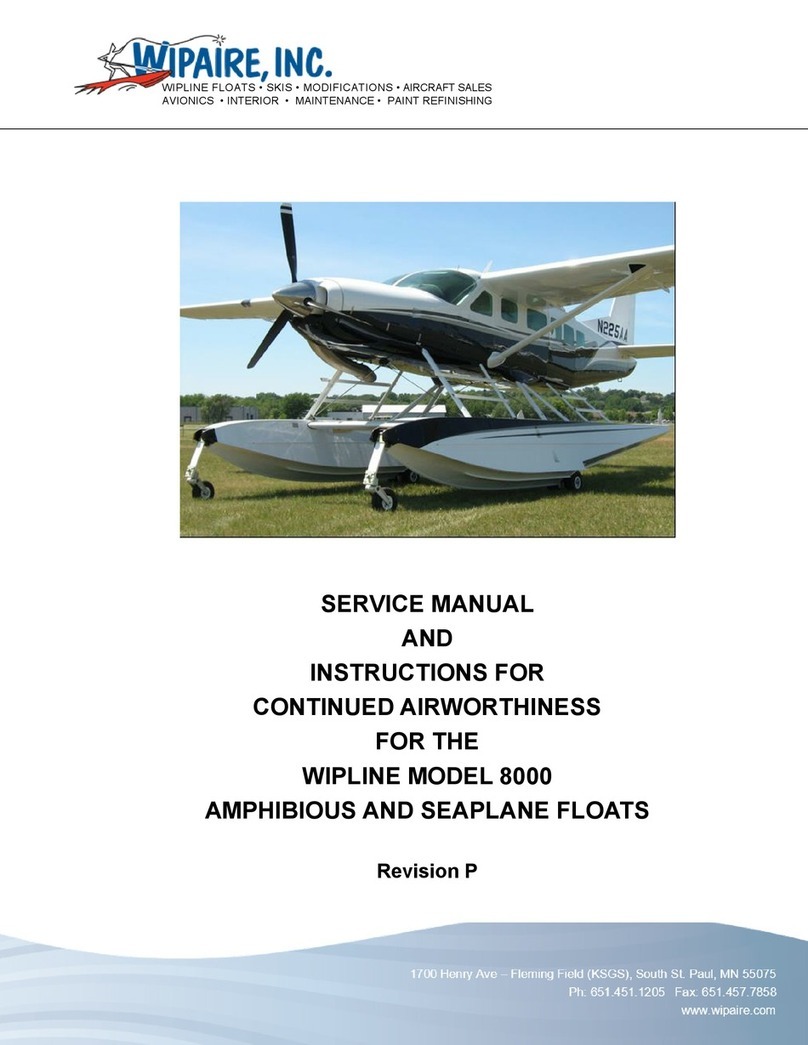
Wipaire
Wipaire WIPLINE 8000 Service manual and instructions
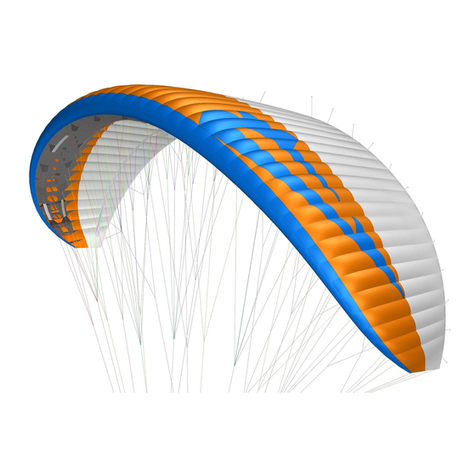
APCO Aviation
APCO Aviation HYBRID manual

Diamond Aircraft
Diamond Aircraft Katana DA 20 Flight manual
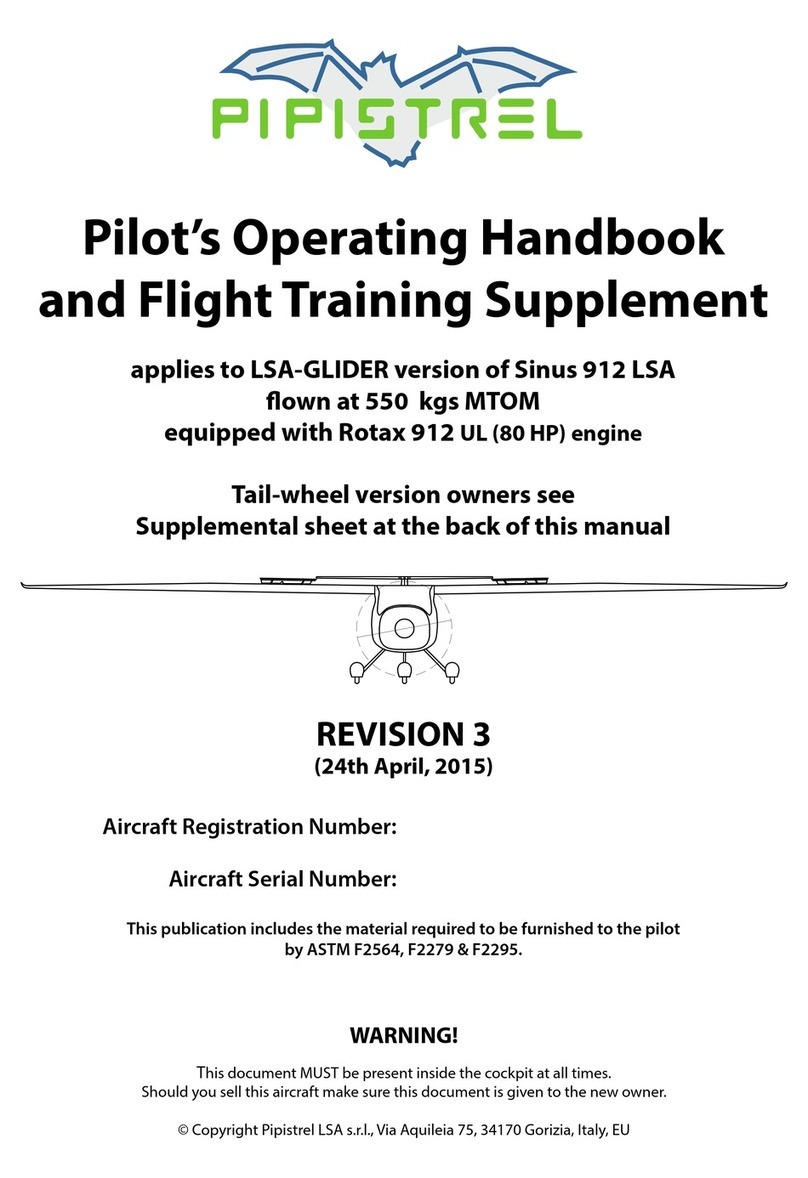
Pipistrel
Pipistrel Sinus 912 LSA LSA-GLIDER Pilot operating handbook
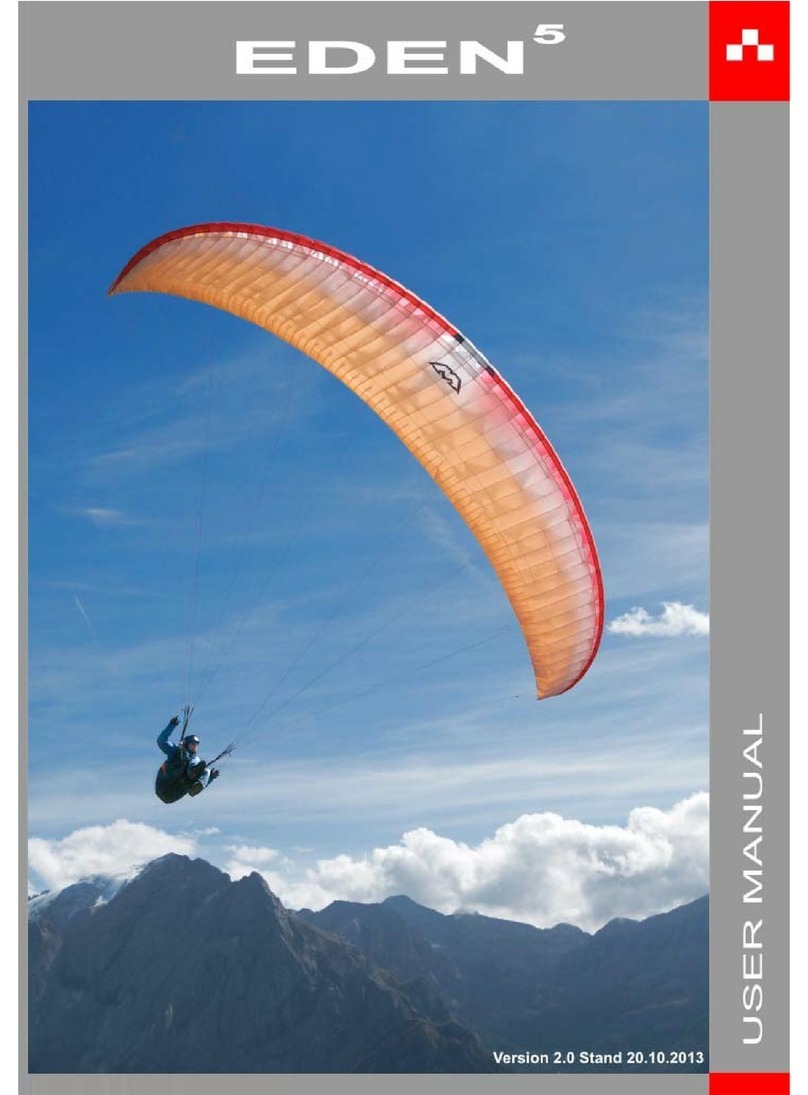
MAC PARA
MAC PARA Eden 5 Series user guide

Technify Motors
Technify Motors Cessna 172 Maintenance manual
